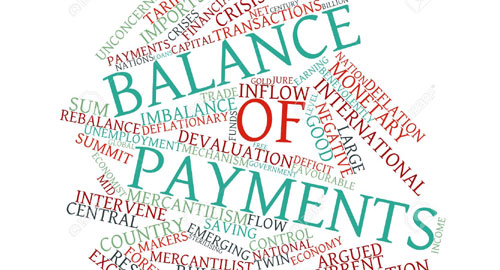The balance of payments is an accounting statement that records transactions (trade in goods, services, and financial assets) between a country’s residents and the rest of the world. Those transactions consist of receipts and payments—credits (entries that bring foreign exchange into the country) and debits (entries that record a loss of foreign exchange), respectively—that are recorded through the use of double-entry bookkeeping. Balance-of-payments data are reported quarterly in national publications and also are published by the International Monetary Fund.
The balance of payments consists of the current account, the capital account, and the financial account.
Current Account
The current account includes trade in merchandise (raw materials and final goods), services (transportation, tourism, business services, and royalties), income (from salaries and direct, portfolio, and other types of investment), and current transfers (workers’ remittances, donations, grants, and aid).
The current account is related to the national income accounts because the trade balance corresponds broadly to the net export value recorded in the national income accounts as one of the four components of the gross national product (GNP), along with consumption, investment, and government expenditures.
Read Also: Current account convertibility Vs Capital account convertibility?
Capital Account
The capital account records all international capital transfers. Those transfers include the monetary flows associated with inheritances, migrants’ transfers, debt forgiveness, the transfer of funds received for the sale or acquisition of fixed assets, and the acquisition or disposal of intangible assets.
Financial Account
The financial account records government-owned international reserve assets (foreign exchange reserves, gold, and special drawing rights with the International Monetary Fund), foreign direct investment, private sector assets held abroad, assets owned by foreigners, and international monetary flows associated with investment in business, real estate, bonds, and stocks.
Equilibrium
The balance of payments should always be in equilibrium. The current account should balance with the sum of the capital and financial accounts. However, because in practice the transactions do not offset each other exactly as a result of statistical discrepancies.
If the current account is in equilibrium, the country will find its net creditor or debtor position unchanging because there will be no need for net financing. Equilibrium in the capital and financial accounts means no change in the capital held by foreign monetary agencies and reserve assets. In the case of disequilibrium arising when a country buys more goods than it sells (i.e., a current account deficit), the country must finance the difference through borrowing or sale of assets (i.e., there is an inflow of capital and thus a capital and financial account surplus).
Must Read: Capital Account Convertibility (CAC)
The current account and the capital account add up to the total account, which is necessarily balanced, a deficit in the current account is always accompanied by an equal surplus in the capital account and vice versa. A deficit or surplus in the current account cannot be explained or evaluated without simultaneous explanation and evaluation of an equal surplus or deficit in the capital account.
Don’t Miss:
The Balance of payment on current and capital accounts.
Discuss the PROs AND CONS of Capital Account Convertibility?



